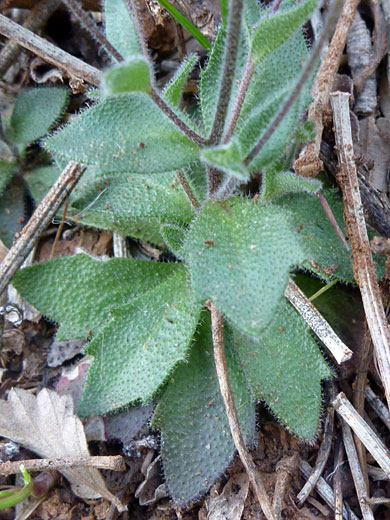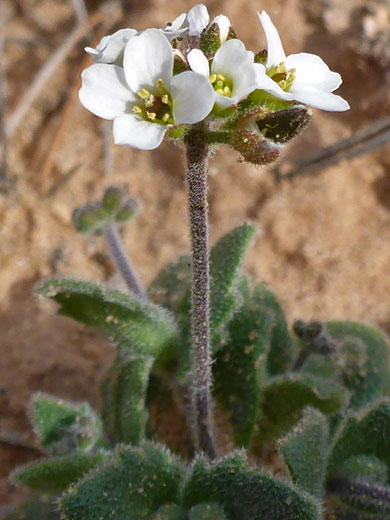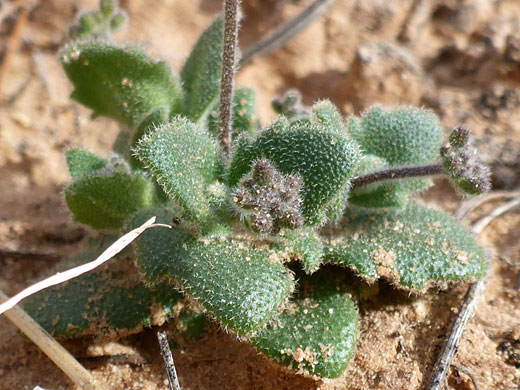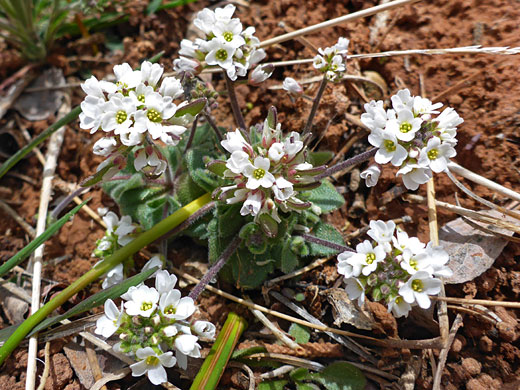Common names:
Wedgeleaf draba, wedge-leaf whitlow grass
Family:
Scientific name:
Draba cuneifolia
Main flower color:
Range:
California, eastwards to Kansas, Texas and Oklahoma
Height:
Up to 15 inches
Habitat:
Open, often sandy areas; fields, hillsides, disturbed ground; up to 7,000 feet
Leaves:
Oblanceolate to obovate, broad, up to 2.5 inches long, with lightly hairy surfaces and a few edge teeth
Season:
February to May
The leaves of draba cuneifolia are quite distinctive; they grow mostly at the base, lying parallel to the ground, and are broadly oblanceolate in outline, with a few large, well-separated teeth along the edges. Like the green or reddish stems, the leaves are covered by small, stiff white hairs, which branch above their base, often star-shaped; a characteristic feature of many draba species.
Plants are small, generally just a few inches tall, and produce typical, mustard-like clusters of tiny flowers; blooms have four green sepals and four white petals, each around one eighth of an inch long, and partly divided. Flower stalks and sepals are also hairy. The flower center contains six stamens and a stigma. Fruits are narrow, green pods, less than half an inch long.
Plants are small, generally just a few inches tall, and produce typical, mustard-like clusters of tiny flowers; blooms have four green sepals and four white petals, each around one eighth of an inch long, and partly divided. Flower stalks and sepals are also hairy. The flower center contains six stamens and a stigma. Fruits are narrow, green pods, less than half an inch long.
All Contents © Copyright The American Southwest | Comments and Questions | Contribute | Site Map









